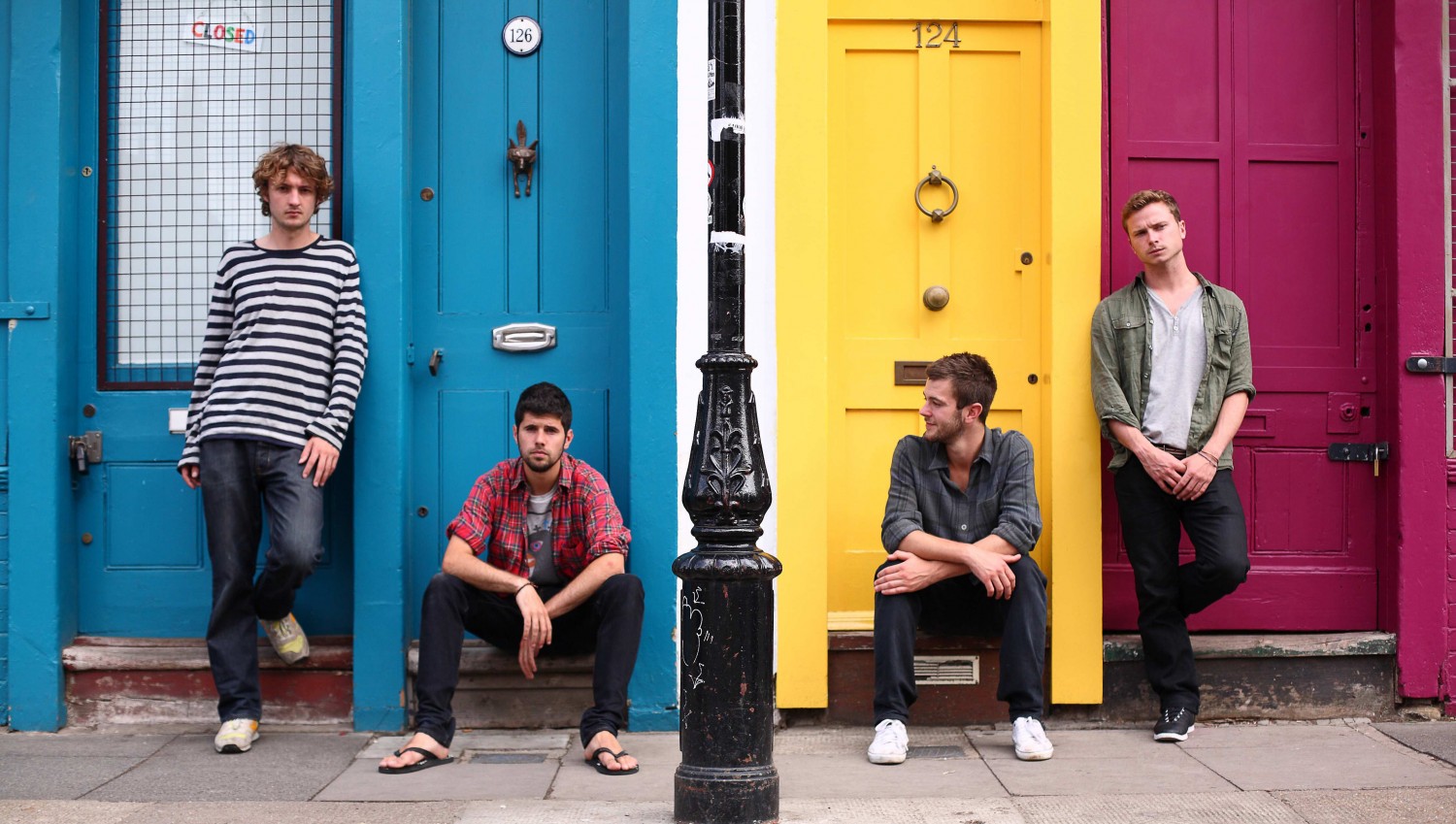Portico Quartet: “The Visitor”
Portico Quartet: “The Visitor”

The first thing that listeners familiar with Portico Quartet will notice about Isla (Real World Records) is that the modern jazz group ages well, like a robust wine that gains nuances every year. Even with added ingredients, the blend crafted by the quartet — Jack Wyllie, Milo Fitzpatrick, Duncan Bellamy, and Nick Mulvey — is smoother than Knee-deep in the North Sea, the debut that earned the group a 2008 Mercury Prize.
The group’s signature soprano sax, double bass, drums, and hang — a relatively new and elusive disc-shaped Swiss percussion instrument that sounds somewhat like muted steel drums — have stuck around to again create the group’s frothy mix of hook-laden jazz. This time, Wyllie has added some electronics to the mix, and Bellamy has opted for a fuller set-up and more trance-like grooves over brushwork.
A second go-around has both softened and hardened Portico’s sound. Bellamy’s use of real sticks brings a sharp, shimmering clatter to the six- and seven-minute tunes while the occasional piano is reminiscent of the more introspective moments of a Thomas Newman score. From this paradoxical mixture, producer John Leckie has crafted an intimate record with an LP feel, split in half by the piano serenade “Life Mask (Interlude).”
Portico delves regularly into the realm of caustic cacophony, as if driven mad by the confines of a studio.
Though the group occasionally dabbled in more haunting sounds on Knee-deep, on its latest offering, Portico delves regularly into the realm of caustic cacophony, as if driven mad by the confines of a studio. (Its first album was written mostly while performing on streets around London.) The imagery invoked by the song titles reinforces the music’s sweet madness: “The Visitor,” “Shed Song (Improv. No 1),” and “Life Mask.”
“It’s a feeling you get off the piece of music,” Wyllie says of the names. “The first track on the first album was called ‘News from Verona,’ and that fit the urgency in that piece; it was all about expecting news and trying to get somewhere on time. And then some of them, like ‘Clipper,’ on the second album…can mean a few different things. That makes things quite open to people to interpret how they want.”
As with all great jazz, improvisation is a key ingredient — and whether it brings sweetness or acescence is often up to who’s doing the improvising. Portico gets carried away toward the end of some tracks — as each instrument tries to get the last word in — and it gives these otherwise well-crafted songs a bitter finish. But at other times, the players’ imaginative minds stray into new, unexplored territory, and this realm is where the band is at its best.
This is the case in “Line,” which begins with two hang parts soothingly in sync. Bellamy’s doubles then enter at a much quicker tempo, creating a piece that is more poly-planar than polyrhythmic. “The idea is to have the hang drums sampled over each other,” Wyllie says, “[then the drums] slightly out of time with each other…and then the bass just playing very occasionally, and the sax just kind of wading over the top. So there’s no real set time for the whole thing.”
Because of this, the live version has evolved. “We’ve got the melodic line that runs through it, which we still keep, and the hang part is the same,” Wyllie says. “But aside from that, I think most of the other stuff has changed in it.” Moments that hopefully will not change: Mulvey’s frenetic scales in “The Visitor,” the haunting bass and tenor sax solos in “Clipper,” and the low-fi swells plaguing “Shed Song’s” dirge.
When not behind the drums, Bellamy does the group’s album art, and the difference between Isla and Knee-deep can be summarized by their respective covers. The debut’s sparse arrangement of rectangular shapes is indicative of its fresh sound but relative simplicity. With Isla’s intricate, colorful, cubist collage, listeners are given a hint of the group’s evolving sound: thicker layers, more saturated hues, and complex nuances that combine to blur genre lines and yet remain accessible to almost any listener.


